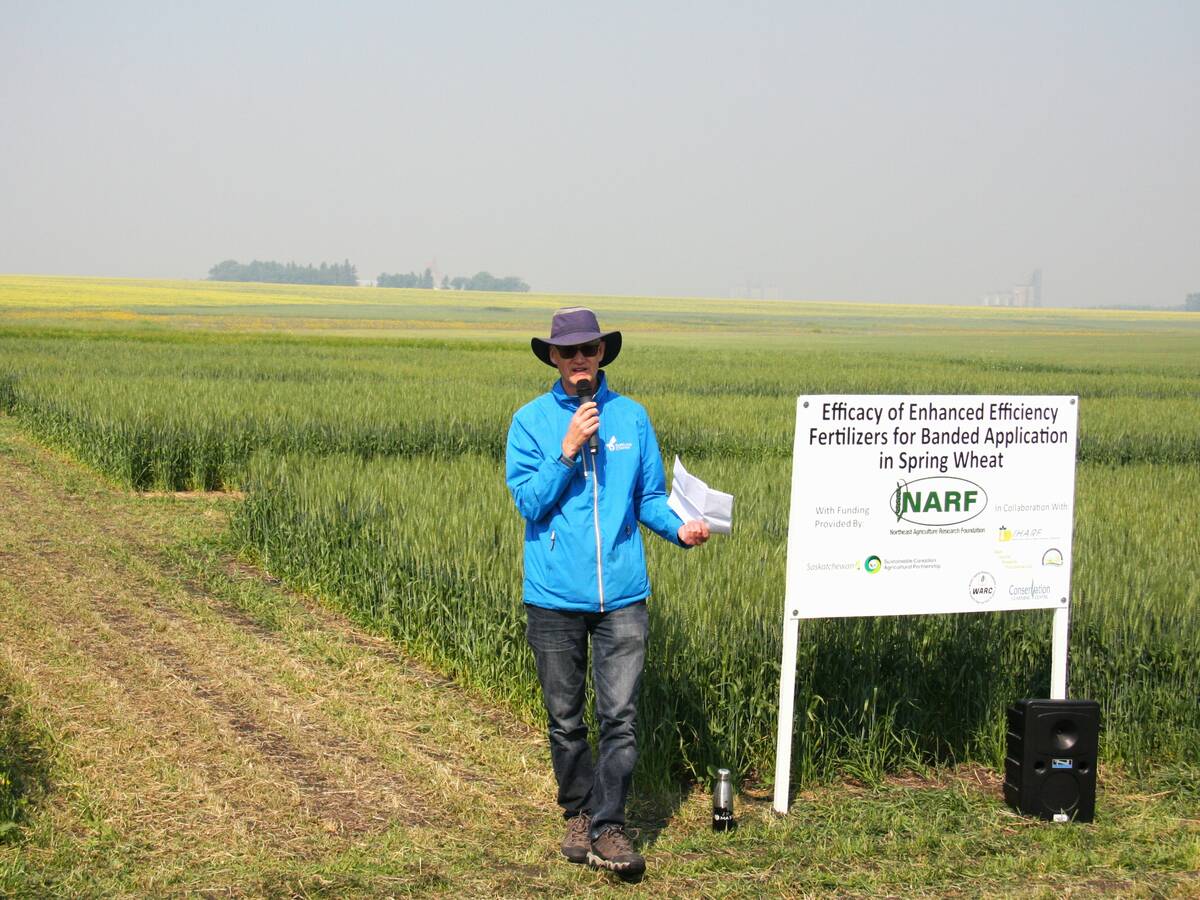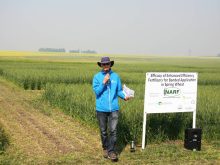Farmer and industry fear has prompted the developer of new genetically modified flax to voluntarily withdraw his varieties from open air testing this summer.
“In order to alleviate some of the concerns, we have decided to cancel the field trial and we’ll stick with the production of seed in a confined greenhouse,” said University of Alberta oilseed variety developer Randall Weselake.
“Right now, we just want to get this basic research done. We don’t want to do anyone any harm.”
Read Also

Fertilizer method’s link to emissions studied
A researcher says others studying greenhouse gas emissions aren’t considering how the loss of nitrogen into the atmosphere correlates with fertilizer application or if there is an impact to yield.
Flax grower organizations and the Flax Council of Canada became worried over the winter about rumours of genetically modified flax varieties being developed at the University of Alberta.
The industry is in crisis now because of the European ban on virtually all Canadian flax, and seeded acreage is expected to slump this spring.
The European blockage comes from microscopic amounts of Triffid flax found in many shipments and supplies of Canadian flax tested this fall and winter.
European Union rules ban the import of any unapproved GM varieties, with a near-zero tolerance level. Triffid was approved in Canada in the late 1990s but then withdrawn because of concerns about European reaction. Europe is the main market for Canadian flax.
Weselake has been developing GM flax varieties that would contain enhanced fatty acid content for both the commercial fish feeding industry and human health uses.
With funding from an Alberta venture capital fund, he has developed a variety that appears to offer an ideal feed for Chilean salmon farm operators who are running out of fishmeal ingredients.
“The idea is to develop a land-based substitute for fish oil,” said Weselake.
Last week, the Canadian Food Inspection Agency approved Weselake’s application for tightly monitored outdoor field plots of his GM flax to be conducted this summer.
Weselake said he and his co-researchers believe all the pollen and seed from these small plots would have been controlled and destroyed so no spread could occur, but the concern from farmers and the industry was so great he has abandoned the outdoor plan.
“It hurts, but we’re trying to take into consideration the sensitivities,” said Weselake.
He received letters from both the Saskatchewan Flax Development Commission and the Flax Council of Canada, with the latter being “fairly intense” in its anxiety about the possible dangers of new GM flax varieties escaping into the commercial system.
The new flax varieties were not being multiplied in outdoor plots to form early commercial seed stock, Weselake said.
They would be grown to produce enough seed to process into oil, which would be fed in trials to animals. All leftover material would be destroyed.
Triffid was already in early seed stock multiplication by the time it was withdrawn.
Weselake said researchers have to develop the crops of the future somehow.
“As university researchers, sometimes these areas are outside the comfort zone, but we have to ask fundamental questions and move forward,” said Weselake.

















